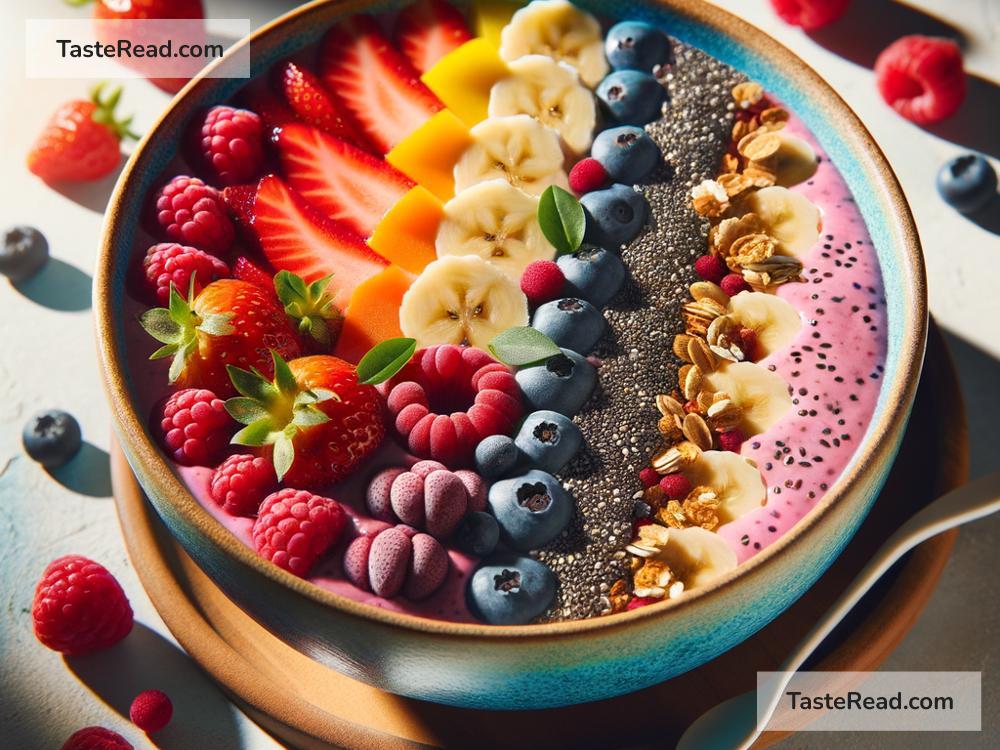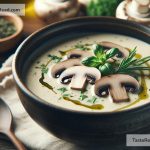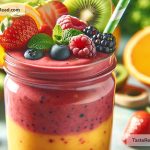How to Photograph Smoothie Bowls with Textural Contrast: A Simple Guide
Smoothie bowls are not just a feast for the stomach but a feast for the eyes too. In the world of social media, where visuals rule, a good photograph of your smoothie bowl can garner just as much appreciation as its taste. Whether you’re a food blogger, a culinary enthusiast, or someone who just loves to share their creations on Instagram, knowing how to photograph smoothie bowls with textural contrast can take your food photography game to the next level. Let’s dive into the simple steps to make your smoothie bowl pictures pop.
1. Lighting is Key
The first step to capturing the beauty of your smoothie bowl is to use natural light. Natural lighting can emphasize the textures and colors of your smoothie bowl without creating harsh shadows or an artificial gloss. Try to set up your photography space near a window where enough indirect sunlight comes through. Morning light works wonders for food photography because it’s soft and evenly diffused.
2. Choose Your Bowl Wisely
The bowl you choose can dramatically affect how your final picture looks. Opt for a bowl that contrasts with your smoothie’s color, making the contents stand out. If your smoothie is a dark color, go for a light-colored or white bowl, and vice versa. Avoid overly decorative bowls that might distract from the smoothie bowl’s textures.
3. Construct with Texture in Mind
The real secret to a visually appealing smoothie bowl lies in the textural contrast. This means incorporating various ingredients with different textures on top of the smooth base. Think crunchy granola, chia seeds, coconut shavings, nuts, and fresh fruits like berries, banana slices, or kiwi. Arrange them thoughtfully, perhaps in neat lines or specific sections, to create visual interest and depth.
4. Get Up Close and Personal
To truly showcase the textural contrast, don’t shy away from taking close-up shots. Positioning your camera or smartphone close to the bowl allows the textures to take the center stage, capturing the detail of each ingredient. It’s like inviting the viewer to almost ‘feel’ the crunch and freshness through the picture.
5. Play with Angles
While top-down shots are the go-to for most smoothie bowl photography, don’t be afraid to experiment with angles. Try capturing your bowl from the side, focusing on one specific area of the bowl, or even a 45-degree angle that shows off all the layers and textures you’ve worked hard to incorporate. Each angle tells a different story.
6. Mind the Background
A cluttered background can distract from the main star: your smoothie bowl. Opt for a simple, neutral background that complements the bowl. Textured surfaces like a wooden table or a marble countertop can add an extra layer of interest without stealing the spotlight. Alternatively, use a plain backdrop for a minimalistic look that places all focus on the food.
7. Enhance with Editing Tools
Even the best natural shots can benefit from a little editing. Use photo editing apps to adjust the brightness, contrast, and saturation to make the colors and textures pop. However, moderation is key. Ensure your smoothie bowl still looks natural and appetizing after editing.
8. Practice Makes Perfect
Photography, like any other skill, improves with practice. Experiment with different combinations of ingredients, bowls, backgrounds, and lighting conditions. Review your photos to see what works and what doesn’t. Over time, you’ll develop an eye for capturing stunning smoothie bowl shots that are both visually appealing and true to their delicious reality.
In essence, photographing smoothie bowls with textural contrast isn’t just about snapping a picture. It’s about storytelling through textures, colors, and composition. By following these simple guidelines, you’re not just capturing a meal; you’re capturing an experience. So, the next time you prepare a smoothie bowl, take a moment to style it and photograph it. Share your creation with the world, and relish the joy and satisfaction that comes from combining your culinary and photographic skills. Happy photographing!


